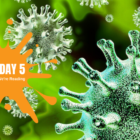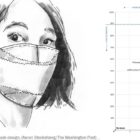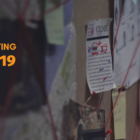Top 10 in Data Journalism
Data Journalism Top 10: COVID TikTok, Fact-Checking Coronavirus, Trump Narcissism, Pandemic Economy
|
The popularity of TikTok has surged during the pandemic, and one particular “data investigation” clip has gone viral. Our NodeXL #ddj mapping from April 20 to 26 found TikTok user Rebecca fact-checking a woman’s claim about the COVID-19 quarantine and her grey hair roots, the Coronavirus Fact-Checking Alliance visualizing the thousands of fact checks they have produced during the pandemic, The New York Times analyzing United States President Donald Trump’s messages about the country’s coronavirus response, and FiveThirtyEight examining how concerned Americans are about the coronavirus compared to the economy.









